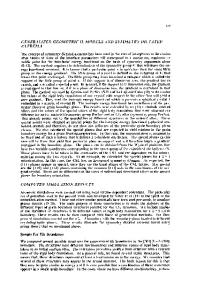Grain Boundary and Cavity Surface Segregation in Crept Ni 3 Al + 0.2at% B AND Ni 3 (AI,Hf) + 0.2at% B
- PDF / 1,190,161 Bytes
- 6 Pages / 420.48 x 639 pts Page_size
- 55 Downloads / 840 Views
GRAIN BOUNDARY AND CAVITY SURFACE SEGREGATION IN CREPT Ni3 AI + 0.2at% B AND Ni 3 (AI,Hf) + 0.2at% B PATRICK H. AU-YEUNG, JOHN T. LUKOWSKI AND CALVIN L WHITE Department of Metallurgical Engineering, Michigan Technological University, Houghton, MI 49931 ABSTRACT Creep strengths and ductilities of boron-doped nickel aluminides are significantly improved by small additions of hafnium. Since creep failure in these alloys proceeds by growth and coalescence of grain boundary cavities, effects of Hf additions on the compositions of grain boundaries and creep cavity surfaces were examined using Auger electron spectroscopy (AES). In order to facilitate intergranular fracture in the AES analysis chamber, gage sections from creep specimens were hydrogen charged and copper plated. Grain boundaries in crept specimens were not flat, and the grains did not exhibit a normal polyhedral appearance. The overall levels of boron detected on the fracture surfaces of the creep specimens were significantly higher than those from uncrept specimens. Additionally, boron was found to segregate more strongly to the grain boundaries while higher concentrations of residual sulfur and phosphorus were detected on the cavity surfaces in both alloys. These results are discussed in terms of the effects of impurity segregation on high temperature grain boundary cavitation. INTRODUCTION Substoichiometric Ni 3 AI, doped with boron to improve room temperature ductility [1,21, fails by intergranular cavitation at stresses in the neighborhood of 276 MPa and temperatures near 760"C. Liu and coworkers found that significant increases in creep life and ductility could be obtained through additions of as little as 0.Sat% Hf [3,4]. Although cavity growth in the Hf modified alloys is significantly slower than in the unmodified alloys, the failure mechanism continues to involve intergranular cavitation. In order to clarify the mechanism(s) by which Hf additions affect cavity growth rates, a study of grain boundary and cavity surface compositions in alloys with and without Hf was undertaken. This paper presents the initial results of this investigation, which are discussed from the viewpoint of their possible relationship to processes involved in cavity nucleation and growth. EXPERIMENTAL PROCEDURES Tensile creep specimens of alloys with compositions Ni-24% AI-0.2% B (at%) (IC-15) and Ni-23.5% AM-0.5% Hf-O.2%B (at%) (IC-50) annealed at 1000"C for 30 minutes and tested to failure in vacuum at 760rC and 276 MPa were provided to the authors by Oak Ridge National Laboratory. The Ni A] + 0.2at% B sample had a creep life of 18 hours and an elongation of 7.5% while the Ni3 (A1,Hf) + 0.2at% B sample had a creep life of 326 hours and 21.2% elongation. AES specimens of approximately 1 cm x 0.15 cm x 0.07 cm were cut from the cavitated gage sections. These specimens were notched 3 to 4 mm behind the original fracture surface. In order to induce intergranular fracture in the AES analysis chamber, specimens were cathodically charged with hydrogen using a slight modification of
Data Loading...











